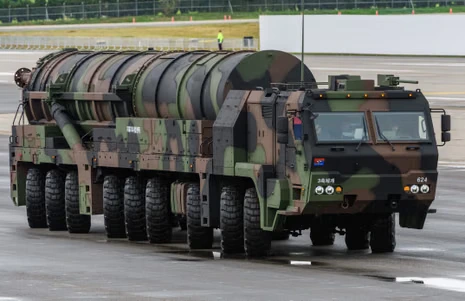South Korea has officially unveiled its most powerful ballistic missile yet, the Hyunmoo-5, dubbed the “Monster Missile,” marking a major milestone in the country’s pursuit of a robust conventional deterrent against North Korea’s expanding nuclear and missile arsenal.
The Hyunmoo-5, weighing around 36 tonnes and stretching 16 metres in length, is a road-mobile, ground-to-ground ballistic missile engineered for deep-penetration and bunker-busting operations. It carries an enormous payload capacity of up to eight tonnes, enabling it to deliver unparalleled kinetic destruction against hardened underground military facilities and missile launch sites in North Korea.
According to defence officials, the missile offers flexible operational ranges, reaching approximately 600 kilometres with a full payload and extending farther with lighter warheads. This range-scalable design provides South Korea with a versatile arsenal for precision conventional strikes, both pre-emptive and retaliatory.
Defence Minister Ahn Gyu-back confirmed that mass production of the Hyunmoo-5 is already underway, with operational induction expected before the end of 2025. He highlighted that the system embodies Seoul’s concept of a “balance of terror” — achieving credible deterrence against nuclear threats through overwhelming non-nuclear capabilities.
The unveiling of Hyunmoo-5 follows the lifting of US-imposed missile payload restrictions in 2017, which paved the way for South Korea to develop larger and more capable missile systems. The new missile forms a core part of Seoul’s Kill Chain and Korea Massive Punishment and Retaliation (KMPR) doctrines — strategic frameworks designed to detect, target, and neutralise Pyongyang’s leadership and military assets in the event of aggression.
Analysts note that the Hyunmoo-5 underscores South Korea’s growing self-reliance in strategic defence technologies and marks a decisive step in its evolution from a regional defence power to a major missile-capable nation.













